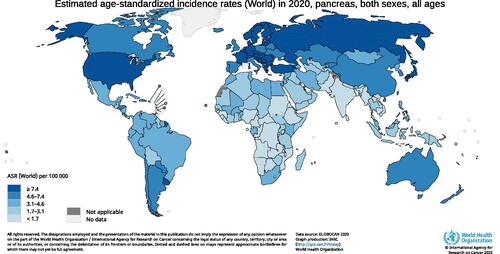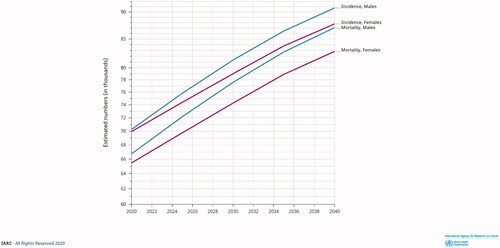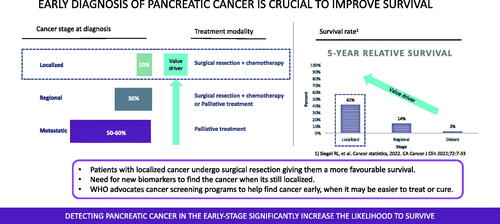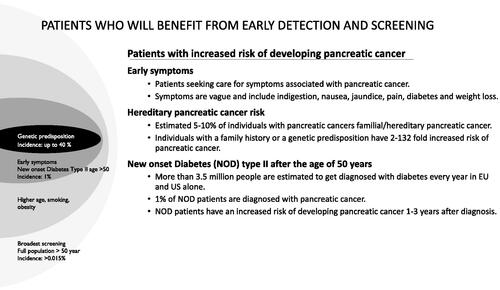Figures & data
Figure 1. Global incidence rates for pancreatic cancer in 2020. Source: GLOBOCAN 2020; https://gco.iarc.fr.

Figure 2. Projected incidence and mortality rates for pancreatic cancer from 2020 to 2040 in Europe. Source: GLOBOCAN 2020; https://gco.iarc.fr.

Figure 3. Development model of pancreatic ductal adenocarcinoma (PDAC). The driver genes may be altered sequentially or simultaneously via chromothripsis. PanIN, pancreatic intraepithelial neoplasia.

Table 1. Potential advantages and disadvantages with neoadjuvant chemotherapy in resectable pancreatic cancer.



